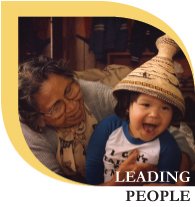Change Leadership

Change leadership is championing the achievement of intended, real change that meets the enduring vision of Indigenous self-determination in British Columbia. It involves collaboratively developing and implementing ideas to achieve positive change from anywhere in the BC Public Service. The change leader learns from other leaders and elders, models the vision and encourages members of the public service to commit to and champion the vision. The change leader inspires others into new ways of thinking and doing business. The change leader routinely energizes the change process and removes barriers to change.
Demonstrates the Behaviour When
- Understands the need for change and its benefits to Indigenous people
- Actively seeks out, listens to and learns from Indigenous people, leaders and elders about what change is needed and how it should happen
- Partners with Indigenous people to define a specific area where change is needed
- Partners in the design and explicit vision for change, sometimes redefining a previous vision
- Challenges the status quo and is gently persistent in furthering change
- Demonstrates patience during the transition and is comfortable with "growing pains"
- Champions the change from within one's own sphere of influence (work unit, branch, with colleagues, etc.)
- Takes specific and sustained action to ensure the successful implementation of the change
- Reinforces the change message with personal attitude, behaviours and actions
- Identifies potential risks and challenges to change vision and plans for them, thinking through all potential consequences from a cross-cultural perspective
- Takes definitive action to align organization (policy, operations, budget, etc.) with the change vision
- Publicly recognizes individuals who demonstrate behaviours consistent with the new direction
Needs Development When
- States that Indigenous people already get enough government support
- Resists change and finds reasons for not making changes
- Complains about the process of change or the reason for change
- Shows frustration or gives up when change is slow or doesn't happen
- States that supervisors and managers, or executive level employees, are the only leaders that can affect change
- Designs a vision for change without Indigenous people and then presents it to them, either for validation or approval
- Places other priorities ahead of championing the change and aligning work to the new vision
- Expects others to change while not modeling the actions and behaviours themselves
- Remains silent when seeing potential risks or challenges that seem unaddressed in the change vision
- Consistently refuses to lead and champion the change from within one's own sphere of influence
- Enters into a token consultation with Indigenous people and then proceeds without full collaboration
